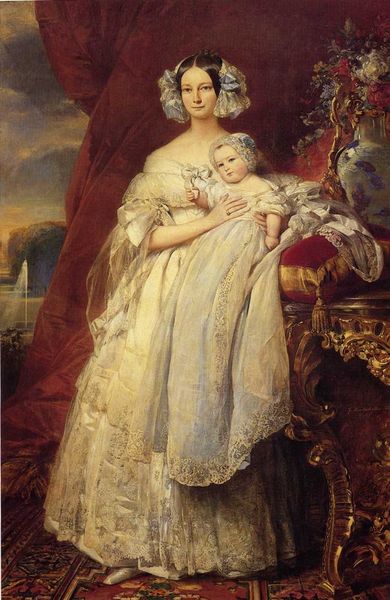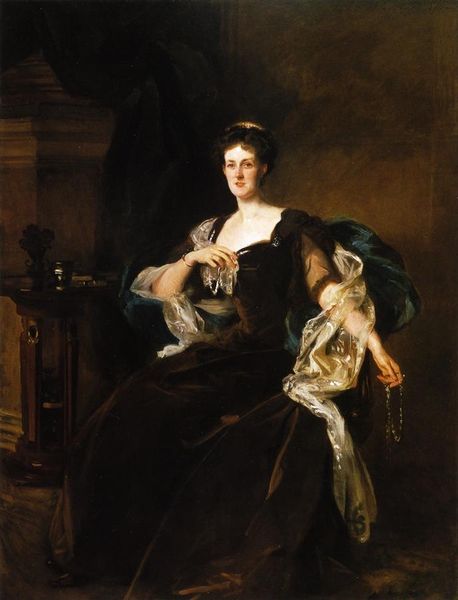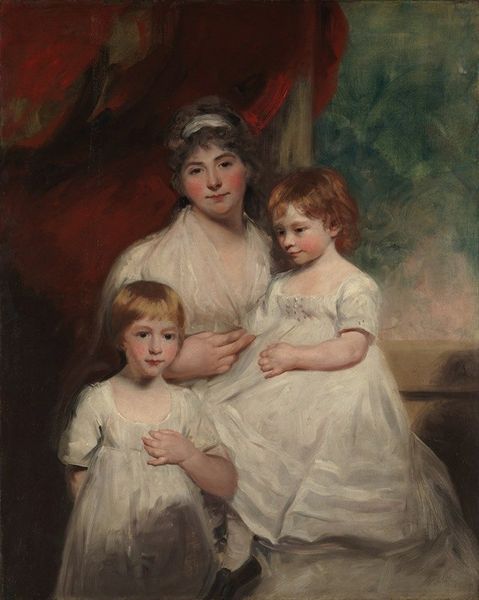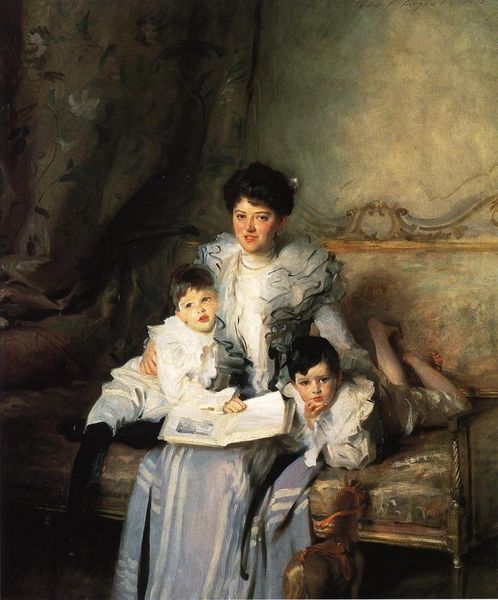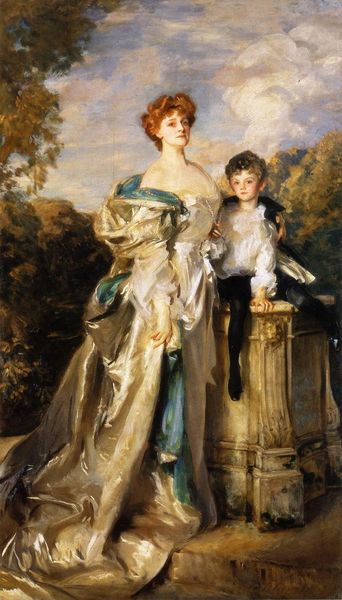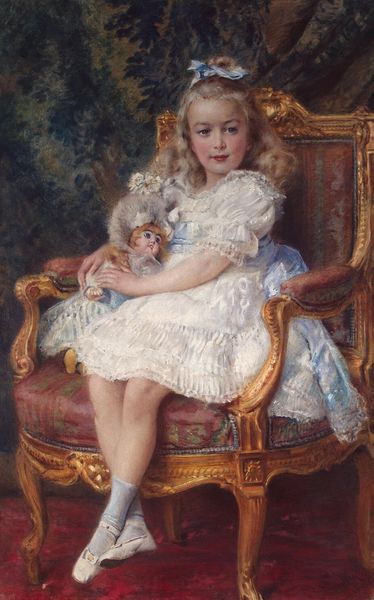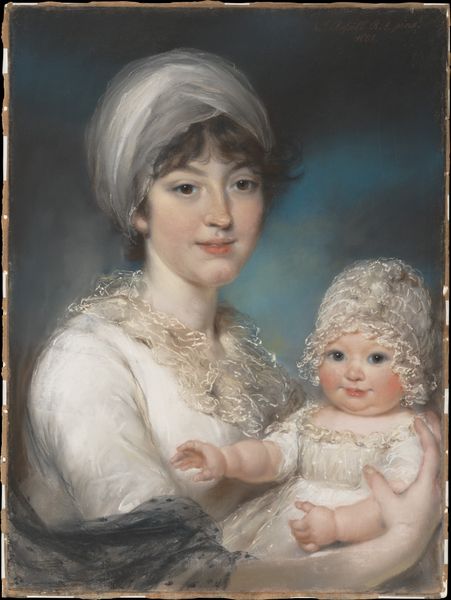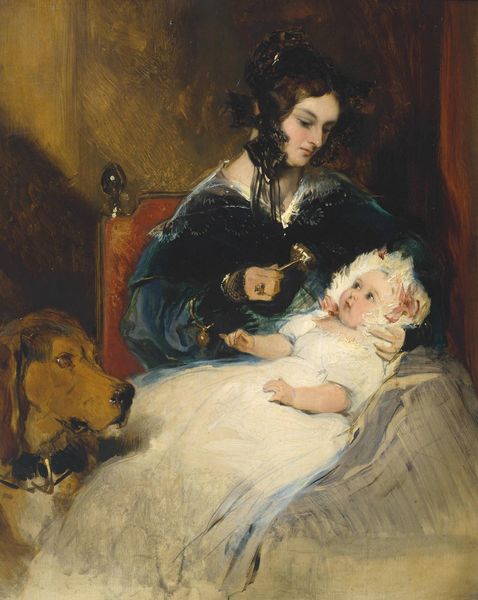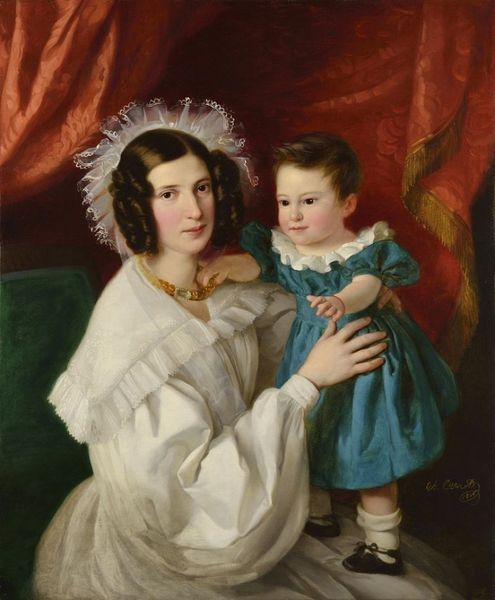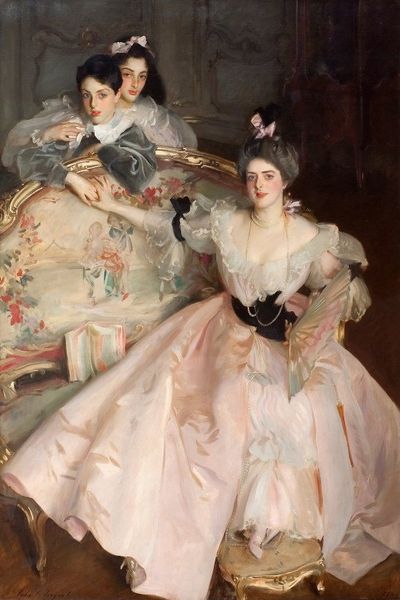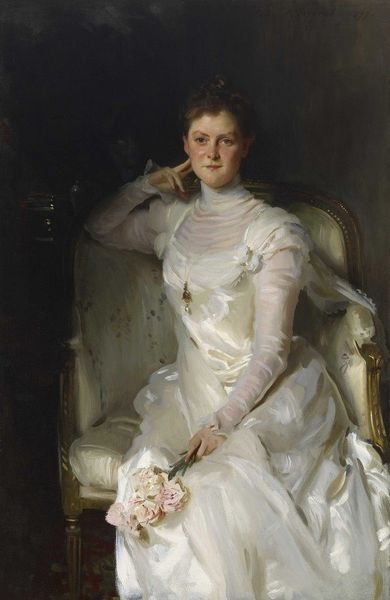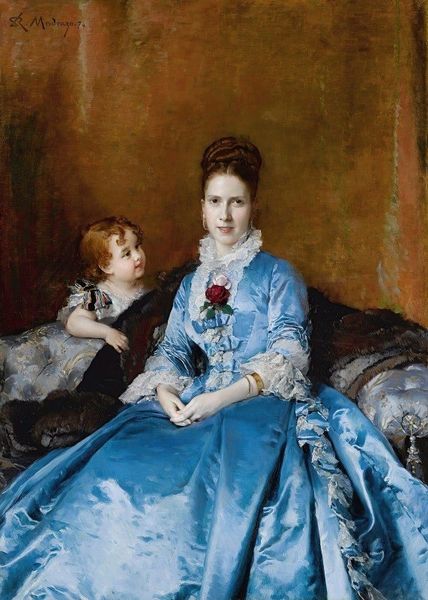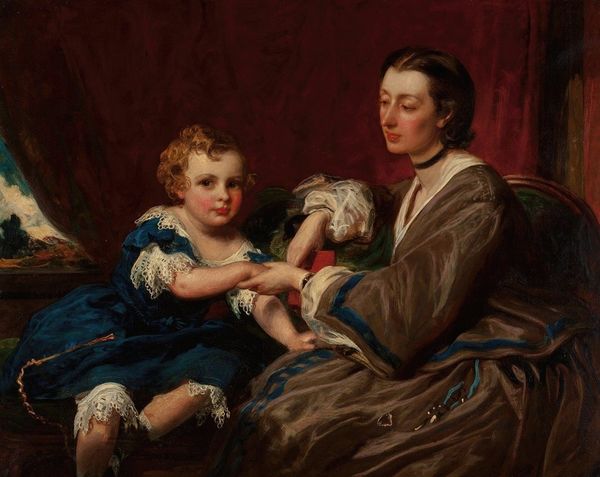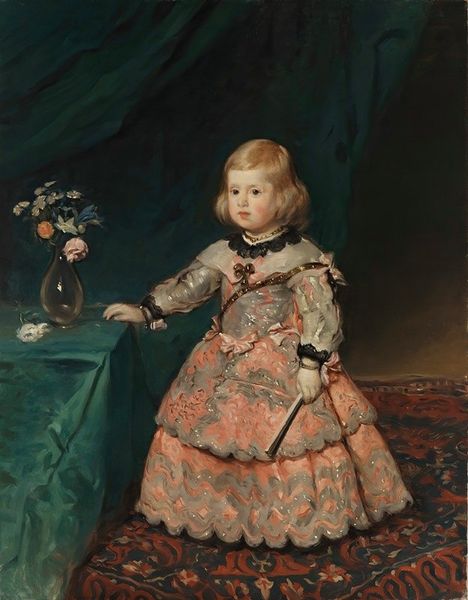
Dimensions: 149.9 x 99.1 cm
Copyright: Public domain
Editor: So, here we have John Singer Sargent’s 1907 oil painting, "Mrs. Henry Phipps and Her Grandson Winston." The striking contrast between the dark background and the luminous figures immediately grabs your attention. What do you see in this piece beyond its obvious beauty? Curator: It’s a portrait that speaks volumes about social dynamics and the enduring symbolism of motherhood. Notice the deliberate use of white in the child’s dress, echoing innocence and purity, almost a blank canvas for the future. Consider that alongside the grandmother, draped in darker, heavier fabric. What feeling does that juxtaposition evoke for you? Editor: I see this tension between generations, maybe tradition versus future potential? The grandmother is so still, while the child reaches outwards. Curator: Precisely! The reaching gesture symbolizes hope, legacy, the continuation of the family line. Sargent subtly uses posture and clothing to suggest the weight of societal expectations carried by the older generation and the boundless possibilities imagined for the younger. The child's barely contained energy contrasts starkly with the stillness of the older woman. Does that energy suggest something else? Editor: Perhaps a new perspective? A challenge to tradition? Curator: Indeed! The portrait can be interpreted as Sargent's reflection on the shifting social landscape of the early 20th century, where traditional values were being questioned and new ideas were emerging. It makes me wonder what those family dinners were like! Editor: It's incredible how much narrative can be packed into a single image. Curator: It’s a powerful reminder that portraiture, like all art, can capture cultural anxieties and aspirations that resonate far beyond the individuals depicted. This piece certainly offers a window into understanding that period, wouldn't you agree? Editor: Absolutely, I never looked at portraiture in quite that way. Thank you!
Comments
No comments
Be the first to comment and join the conversation on the ultimate creative platform.
